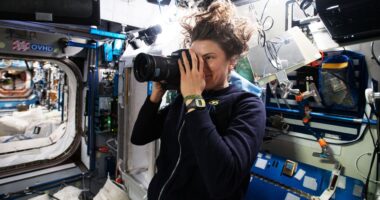A NEW algorithm for scanning the distant corners of space has spotted more than 100 previously unseen asteroids.
The software is powered by a major tech company and offers new opportunities to study asteroids and their trajectories.
The Asteroid Discovery Analysis and Mapping (ADAM) uses cloud computing to scan billions of archival images of the sky and flags light patterns that resemble asteroids.
NBC News reported that the ADAM system was tested using 68billion observations from the National Optical-Infrared Astronomy Research Laboratory, and it keyed in on 104 previously undiscovered asteroids.
The effort is spearheaded by the B612 Foundation, a non-profit with star-studded leadership and a laser focus on planetary science.
ADAM will help build a comprehensive map of Earth’s cosmic surroundings by resourcing past data collections and without the hang-ups that traditional asteroid tracking requires.


Ed Lu, a former Nasa astronaut and co-founder of the B162 Foundation said “any telescope with an archive can now become an asteroid search telescope,” thanks to ADAM.
The programs run by B162 and the Asteroid Institute are developed in partnership with Google.
“Google Cloud has enabled the ADAM platform’s current development and future work with generous Cloud credits and technical support,” B162 wrote in a statement on their official site.
Google’s next-generation technology enables complex data calculation and comes at a time when rudimentary methods are being exhausted.
Most read in Tech
“The work of the Asteroid Institute is critical because astronomers are reaching the limits of what’s discoverable with current techniques and telescopes,” an astronomy professor who co-created the algorithm said.
Part of the Asteroid Institute’s motivation for developing ADAM is the natural fear of a world-ending asteroid impact.
“We have no real sense of the ultimate possibilities that will emerge in our evolutionary future,” said Rusty Schweickart, another former Nasa astronaut linked with B612.
“We do know, however, that there are existential threats inherent in this scenario, one being asteroid impacts.”
Elon Musk once said “a bunch of people will probably die in the beginning” of popularized manned space travel.
By mapping Earth’s surroundings ADAM helps minimize the risk of an asteroid collision with a spacecraft or planet Earth.
We pay for your stories!
Do you have a story for The US Sun team?










